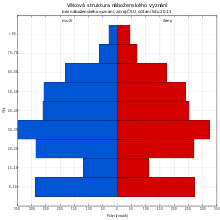Irreligion is the absence or rejection of religious beliefs or practices. It encompasses a wide range of viewpoints drawn from various philosophical and intellectual perspectives, including atheism, agnosticism, religious skepticism, rationalism, secularism, and non-religious spirituality. These perspectives can vary, with individuals who identify as irreligious holding diverse beliefs about religion and its role in their lives.

State atheism or atheist state is the incorporation of hard atheism or non-theism into political regimes. It is considered the opposite of theocracy and may also refer to large-scale secularization attempts by governments. To some extent, it is a religion-state relationship that is usually ideologically linked to irreligion and the promotion of irreligion or atheism. State atheism may refer to a government's promotion of anti-clericalism, which opposes religious institutional power and influence in all aspects of public and political life, including the involvement of religion in the everyday life of the citizen. In some instances, religious symbols and public practices that were once held by religions were replaced with secularized versions of them. State atheism in these cases is considered as not being politically neutral toward religion, and therefore it is often considered non-secular.
Antireligion is opposition to religion or traditional religious beliefs and practices. It involves opposition to organized religion, religious practices or religious institutions. The term antireligion has also been used to describe opposition to specific forms of supernatural worship or practice, whether organized or not. The Soviet Union adopted the political ideology of Marxism–Leninism and by extension the policy of state atheism which opposed the growth of religions.

Religion has been a major influence on the societies, cultures, traditions, philosophies, artistic expressions and laws within present-day Europe. The largest religion in Europe is Christianity. However, irreligion and practical secularisation are also prominent in some countries. In Southeastern Europe, three countries have Muslim majorities, with Christianity being the second-largest religion in those countries. Ancient European religions included veneration for deities such as Zeus. Modern revival movements of these religions include Heathenism, Rodnovery, Romuva, Druidry, Wicca, and others. Smaller religions include Indian religions, Judaism, and some East Asian religions, which are found in their largest groups in Britain, France, and Kalmykia.

Atheism, agnosticism, scepticism, freethought, secular humanism or general irreligion are increasing in Australia. Post-war Australia has become a highly secularised country. Religion does not play a major role in the lives of much of the population.

In the Czech Republic, 47.8% of population is irreligious, while 21.3% of the population are believers. The religious identity of the country has changed drastically since the first half of the 20th century, when more than 90% of Czechs were Christians. As of 2021, 11.7% of the population identified with Christianity ; 10.8% identified with other religious identities or beliefs. According to sociologist Jan Spousta, not all the irreligious people are atheists; indeed, since the late 20th century there has been an increasing distancing from both Christian dogmatism and atheism, and at the same time ideas and non-institutional models similar to those of Eastern religions have become widespread through movements started by various gurus, and hermetic and mystical paths.

Estonia, historically a Lutheran Christian nation, is today one of the least religious countries in the world in terms of declared attitudes, with only 14 percent of the population declaring religion to be an important part of their daily life. This is thought to largely be a result of the Soviet occupation of Estonia in 1940, prior to which Estonia had a large Christian majority - according to the 1922 census, 99.3% of the Estonian population were Christians.

Irreligion in Estonia pertains to atheism, agnosticism, and secularism of the people and institutions of Estonia. Irreligion is prominent in Estonia, where a majority of citizens are unaffiliated with any religion. Estonian irreligion dates back to the 19th century, when Estonian nationalists and intellectuals deemed Christianity a foreign religion in opposition to Estonian independence. Irreligion in Estonia was later accelerated by the Soviet occupation of the Baltic states, in which state atheism was enforced. By some metrics, Estonia is the most irreligious country in the world.

Irreligion is prevalent in Germany. In a time of near-universal adoption of Christianity, Germany was an intellectual centre for European freethought and humanist thinking, whose ideas spread across Europe and the world in the Age of Enlightenment. Later, religious tradition in Germany was weakened by the twin onslaughts of Nazi rule during World War II and that of the Socialist Unity Party in East Germany during the Cold War. In common with most other European societies, a period of secularisation also continued in the decades that followed. While today Christianity remains prevalent in the west of Germany, in the east relatively few Germans identify with any religion whatsoever.
According to public opinion polls, irreligion in Uruguay ranges from 30 to 40 to over 47 percent of the population. Uruguay has been the least-religious country in South America due to nineteenth-century political events influenced by positivism, secularism, and other beliefs held by intellectual Europeans. The resistance of the indigenous population to evangelization, which prevented the establishment of religion during the colonial era, has also been influential. According to Nestor DaCosta (2003), irreligion has historically been a feature of Uruguayan identity.

Irreligion in Bulgaria pertains to atheism, agnosticism, and secularism among the citizens of Bulgaria. Irreligion is a minority religious position in Bulgaria. Making up approximately 5-10% of Bulgarians, irreligion is the second most common religious stance after Eastern Orthodoxy. Irreligion in Bulgaria is closely tied to the history of Marxism–Leninism and Soviet rule in the country during the 20th century.
Irreligion in Latin America refers to various types of irreligion, including atheism, agnosticism, deism, secular humanism, secularism and non-religious. According to a Pew Research Center survey from 2014, 8% of the population is not affiliated with a religion. According to Latinobarómetro, the share of irreligious people in Latin America quadrupled between 1996 and 2020, from 4% to 16%.
Irreligion in Romania is rare. Romania is one of the most religious countries in Europe, with 92% of people saying that they believe in God. Levels of irreligion are much lower than in most other European countries and are among the lowest in the world. At the 2011 census, only 0.11% of the population declared itself atheist, up from the 2002 census, while 0.10% do not belong to any religion. While still one of the most religious countries in Europe, practicing, church and mass attendance is quite low, even compared to some less religious countries than Romania. It is mainly practiced by elderly people, mainly in rural areas, while in urban areas church attendance and practice is much lower. As of 2021, almost 85% are declared religious, of which about 73% are declared orthodox, 12% other religions, about 1% atheists or irreligious and about 14% declared nothing about religion.

Irreligion in Croatia pertains to atheism, agnosticism, and lack of religious affiliation in Croatia. Even though the 2011 census showed that only 4.57% of Croats considered themselves irreligious, Gallup polls conducted in 2007 and 2008 found that 30.5% of respondents did not consider religion important in their lives. The Japanese research center, Dentsu, conducted a survey in 2006 concluding that 13.2% of Croats declare themselves irreligious, compared to the 7% found by a 2010 Eurobarometer survey across Europe.
Irreligion in Italy includes all citizens of Italy that are atheist, agnostic, or otherwise irreligious. Approximately 12% of Italians are irreligious, and no affiliation is the second most common religious demographic in Italy after Christianity. Freedom of religion in Italy was guaranteed by the Constitution of Italy following its enactment in 1948. Until then, the Catholic Church was the official state church of Italy.

Irreligion in Hungary pertains to atheism, agnosticism, and secularism in Hungary. The tradition of irreligion in Hungary originates from the time of Austria-Hungary and it was a significant part of Communist rule in the second half of the 20th century. As of 2011, irreligion is the country's second largest religious stance after Catholicism.
Irreligion in Latvia pertains to atheism, agnosticism, and lack of religious affiliation in Latvia. Irreligious thought in Latvian history is associated with national identity and a period of Communist rule. The irreligious make up a significant minority group in Latvia today, with 29% of Latvians identifying as irreligious.
Irreligion in Lithuania pertains to atheism, agnosticism, and lack of religious affiliation in Lithuania. Irreligious Lithuanians make up a small minority of the population, encompassing only 6.11% of the population in the Lithuanian census of 2021. Irreligion in Lithuania is associated with the period of Soviet rule in the late 20th century.










